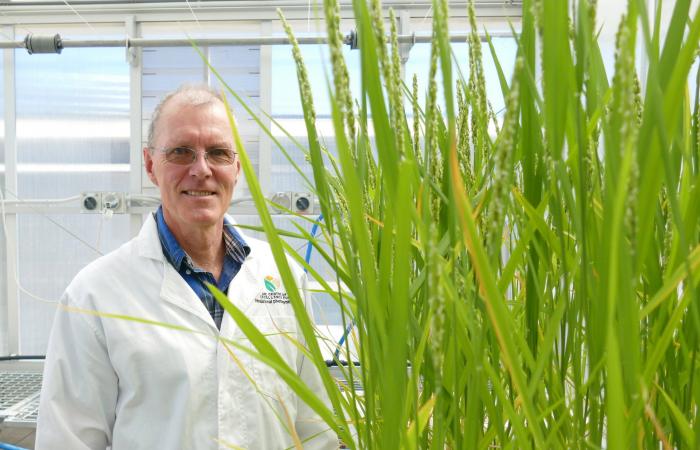During photosynthesis, leaves capture carbon dioxide (CO)2) from the atmosphere and convert them into organic compounds. However, the path from the leaf surface to the enzymes in which carbon is fixed in the leaves is fraught with challenges. Understand how each of the many CO barriers2 Molecules they encounter in their frantic adventure of fixation are essential if we are to manipulate them and improve plant production.
In a Tansley review posted in the Journal this week New phytologistProfessor John Evans of the ARC Translational Photosynthesis Competence Center reviewed the published literature on the conductivity of leaf mesophyll and created a “leaf profile” of the various components involved in CO2 Travel within the sheet and their relative importance.
“We need to know the relative importance of characteristics such as the surface area of mesophyll cells, the thickness of the cell wall and the permeability of the membranes within the cell in order to determine how easily carbon dioxide can move to the sites of fixation,” says the author Professor Evans from the Research School of Biology at the Australian National University.
“The carbon dioxide consumed during photosynthesis is replaced by diffusion, but this is limited by stomata and the mesophyll tissue in the leaf. These limitations affect how much water and nitrogen are needed to fix carbon, ”he says.
Professor Evans identified four key issues related to cell wall and membrane properties where research efforts need to be focused.
One related to the type of photosynthesis that plants use. “In C4 plants like sugar cane, sugar cane and maize, carbon dioxide only needs to reach the cytoplasm, while in C3 plants like wheat and rice there is an additional barrier in the chloroplasts that effectively doubles resistance,” says Professor Evans. There are large differences in the thickness of the cell walls within C3 plants. Cell walls account for less than a quarter of the total resistance of crops like rice with thin walls, but they account for more than three quarters of the total resistance of slower growing C3 plants with thicker, less porous walls.
Another question centers on stomata, the millions of mouths that cover leaves and let water and carbon dioxide in and out of each leaf. Stomata can open and close to vary resistance to water and carbon dioxide exchange. It has also been observed that the resistance associated with mesophyll changes when light, carbon dioxide concentration, or temperature vary, suggesting that mesophyll conductivity is also dynamic. However, some of these dynamic changes may be a result of spatial complexity rather than rapid changes in membrane permeability, for example.
Finally, the paper sheds light on an exciting field of research on the role of carbon dioxide-permeable aquaporins, a very different type of “filter” that is embedded in cell membranes and controls the transport of carbon dioxide. Aquaporins are being studied extensively because they represent a potential technical target for increasing photosynthetic efficiency.
Development of drought-resistant plants with photosynthesis of the Crassulacean acid metabolism (CAM)
More information:
John R. Evans. Mesophyll conductivity: walls, membranes and spatial complexity, New phytologist (2020). DOI: 10.1111 / nph.16968
Provided by the ARC Center of Excellence for Translational Photosynthesis
Quote: Breathlessness: Bringing carbon dioxide into cells for photosynthesis (2020, November 2), accessed on November 2, 2020 from https://phys.org/news/2020-11-struggling-carbon-dioxide-cells-photosynthesis.html
This document is subject to copyright. Except for fair trade for the purpose of private study or research, no part may be reproduced without written permission. The content is provided for informational purposes only.
These were the details of the news Bring carbon dioxide into cells for photosynthesis for this day. We hope that we have succeeded by giving you the full details and information. To follow all our news, you can subscribe to the alerts system or to one of our different systems to provide you with all that is new.
It is also worth noting that the original news has been published and is available at de24.news and the editorial team at AlKhaleej Today has confirmed it and it has been modified, and it may have been completely transferred or quoted from it and you can read and follow this news from its main source.

